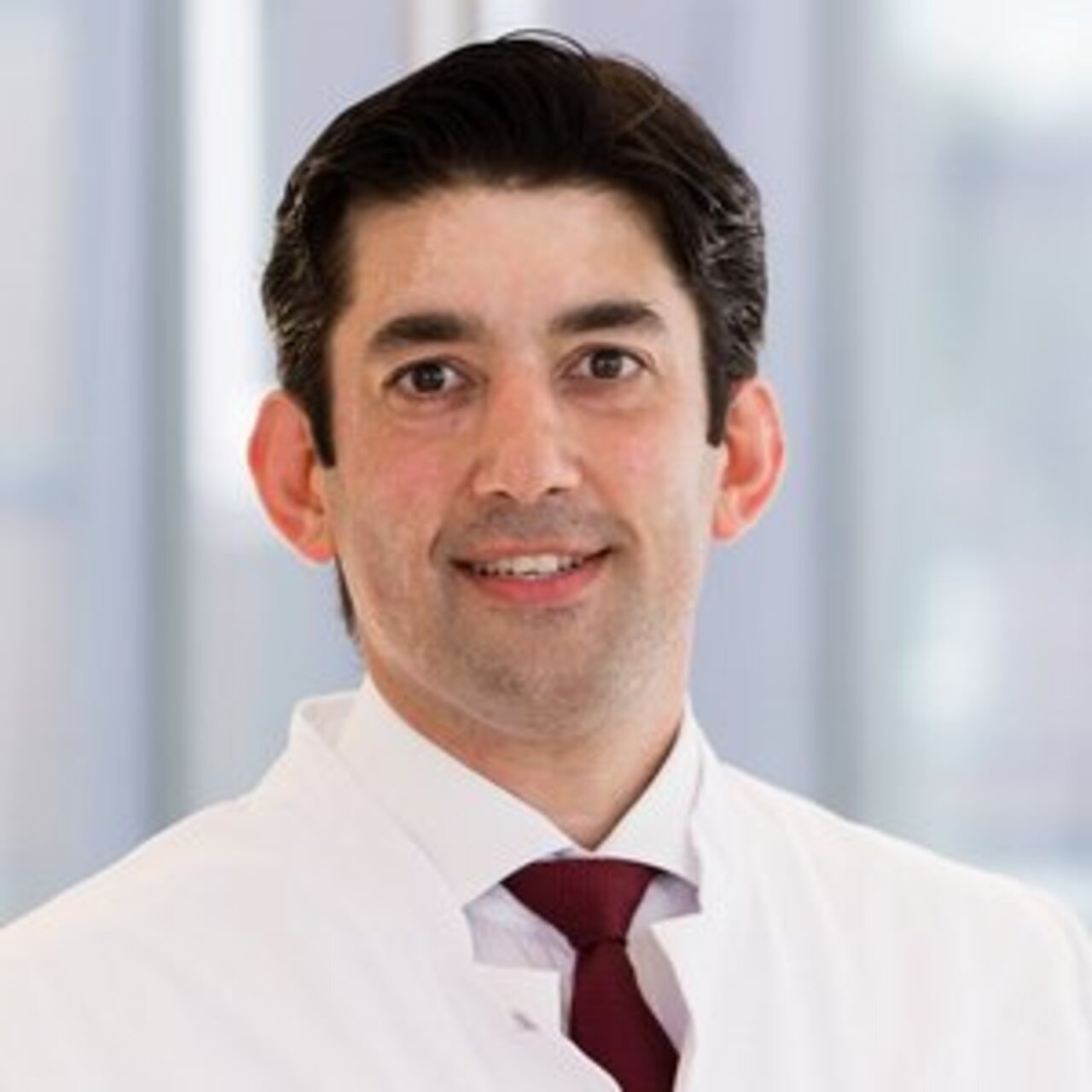Specialists in Congenital Heart Defects
4 Specialists found
Information About the Field of Congenital Heart Defects
Congenital Heart Defects Frequency
Congenital heart defects occur quite frequently in newborns. Thus, 10-12 out of 1000 live births have a heart defect. In the past, many patients in this disease group died very quickly, 25% in infancy and another 60% in the first two years of life. Today, thanks to medical advances in pediatric cardiac surgery, over 90% of those affected reach adulthood.
What Are the Different Forms of CHD?
CHD encompasses a broad spectrum of diseases, including the upper group of stenosis of large vessels or heart valves, e.g., pulmonary stenosis, aortic isthmus stenosis, and aortic valve stenosis.
Furthermore, there are diseases among congenital heart defects in which "right-left shunts" develop. In this case, irregular connections occur between the right and left parts of the heart, so oxygen-poor and oxygen-rich blood mix incorrectly.
Common Congenital Heart Defects
The most common form (50% of congenital heart defects) among these right-to-left shunts are ventricular septal defects (VSD), in which the septum between the heart chambers has one or more holes.
In addition, there are, for example, atrial septal defects (ASD), combined atrioventricular septal defects (AVSD), patent ductus arteriosus (=ductus arteriosus persistent, PDA) or Fallot tetralogy, which is a complex of several malformations of the cardiovascular system.
Hypoplastic Left Heart Syndrome (HLHS)
In hypoplastic left heart syndrome (HLHS), there is a symptom complex with narrowing of the valves of the left heart, marked hypoplasia (underdevelopment) of the left ventricle, and hypoplasia of the great vessels (aorta, among others) connecting to the heart. If left untreated, up to 95% of newborns die within the first 10 days of life. The only available therapy is heart surgery. However, the prognosis is also limited in the long term.
Rare Congenital Heart Defects
There is also the rare form (less than 1% of AHF) of total pulmonary vein occlusion (TAPVC). In this case, oxygenated blood from the lungs mistakenly flows back into the right part of the heart via the pulmonary veins, which leads back to the lungs. The blood from the lungs must be pumped into the body via the left heart. In this case, the body can only be supplied with oxygen through a right-to-left shunt via a defect in the septum. If left untreated, most children die during the first year of life.
In complete transposition of the major arteries (TGA, D-TGA), there are drastic changes in the blood circulation due to malformations during vascular development. In this clinical picture, the aorta (main artery) is displaced to the right (lat. dexter=right, dextroposition of the aorta = D -TGA). This results in a parallel connection of the pulmonary and systemic circulation, which are usually connected in series. Therefore, no oxygen-rich blood can enter the systemic circulation after it has been saturated with oxygen in the pulmonary circulation. Survival is only possible through additional cross-connections between the circuits (e.g., septal defects, persistent ductus arteriosus). The newborns usually develop severe cyanosis (blue coloration) in the hours after birth as a sign of oxygen deficiency.
What Are the Causes of Congenital Heart Defects?
The human heart develops very early in the embryonic period. Thus, the formation of the heart begins as early as the 18th or the 19th day after the fertilization of the egg. In the 3rd – 8th week of pregnancy, heart development takes place, and during this time, congenital heart diseases can arise due to a defective organ formation.
In over 90% of patients, the cause of the disease is assumed to be multifactorial. This means that many different factors play a role in the development of the disease, and only a few are known for sure. Often the reason for the development of the heart defect remains unclear.
Important risk factors are, for example, metabolic diseases of the mother (phenylketonuria, diabetes mellitus type I) if they are poorly controlled in early pregnancy. It is also known that drug use, alcohol, or certain medications by the pregnant woman can cause heart disease in the child. Certain infections, especially from viruses, such as rubella, are also crucial factors. Chromosomal defects, such as trisomy 21 (Down syndrome), or syndromes such as Turner syndrome or Marfan syndrome are often associated with heart defects from birth.
What Are Symptoms of Congenital Heart Defects?
Patients with congenital heart defects show signs of inadequate oxygenation after birth. They show cyanosis, blue skin coloration, and mucous membranes, especially on the lips and nails. Affected infants usually breathe rapidly, develop edema (swollen legs and arms), sweat more, and often have palpitations (tachycardia).
Newborns often have difficulty drinking and are listless and floppy. Patients may fail to thrive, characterized by poor weight gain or growth, and in some cases, motor or mental developmental delays.
How Can Congenital Heart Defects Be Diagnosed?
The first important step in diagnosis is a careful clinical examination, which in most cases already points the way forward. The patient undergoes a detailed physical examination.
Non-invasive diagnostics include blood pressure measurement, electrocardiogram, and echocardiography. Echocardiography, in which the heart is examined using ultrasound equipment, is the most critical examination method in today's medicine for detecting congenital heart defects.
Invasive examination methods include cardiac catheterization and angiography. Cardiac catheterization is of particular interest because of the additional possibility of direct therapy. Interventional catheter procedures, for example, allow dilating valve and vessel stenoses with balloons or closing shunts (holes) between the heart chambers.
An additional examination is MRI (magnetic resonance imaging). This examination has the advantage of no radiation exposure and can show the heart accurately in 3D, but infants and young children must be anesthetized for this examination. In contrast, radiation exposure occurs with CT (computed tomography), but the exam can be done more quickly, so anesthesia is not necessary for young patients.
How Can Congenital Heart Defects Be Treated?
Congenital heart disease therapy is generally divided into surgical and minimally invasive (catheter) procedures. Each of these therapies aims to close shunts, widen existing constrictions, or repair defective valves.
In a smaller group of congenital heart defects, such as a ventricular septal defect (VSD) or an atrial septal defect (ASD), the defect can be eliminated by surgery or intervention with a catheter. The surgery cures these patients, and they have a regular functioning heart afterward. However, in most congenital heart defects, only corrective surgery can be performed, so there is always only a "repaired" heart after surgery.
Very severe heart defects in children in poor general conditions sometimes allow only palliative surgery. These surgeries are intended to enable the heart to supply two separate blood circuits and, if possible, to avoid mixing oxygenated and deoxygenated blood to reduce or eliminate cyanosis.
The individual surgical and interventional treatment options for the various congenital heart defects are very specific. Contact a specialist, in this case, a pediatric cardiac surgeon, if you have specific questions.
What Is the Life Expectancy for Patients with Congenital Heart Defects?
Nowadays, more than 90% of all patients with congenital heart defects reach adulthood. However, affected individuals for whom only corrective surgery is possible require specialized care from a cardiologist throughout their lives. When surgery results in complete correction of the heart defect (e.g., closure of a hole in the cardiac septum), patients now have an average life expectancy.
Sources:
Kurzlehrbuch Embryologie, Urban & Fischer, Susanne Schulze, 2006
Innere Medizin, Gerd Herold, 2014
Pädiatrie, Duale Reihe, Thieme, Ludwig Gortner, Sascha Meyer, Friedrich Carl Sitzmann, 4. Auflage, 2012
http://www.kompetenznetz-ahf.de/ (04.09.2015)



